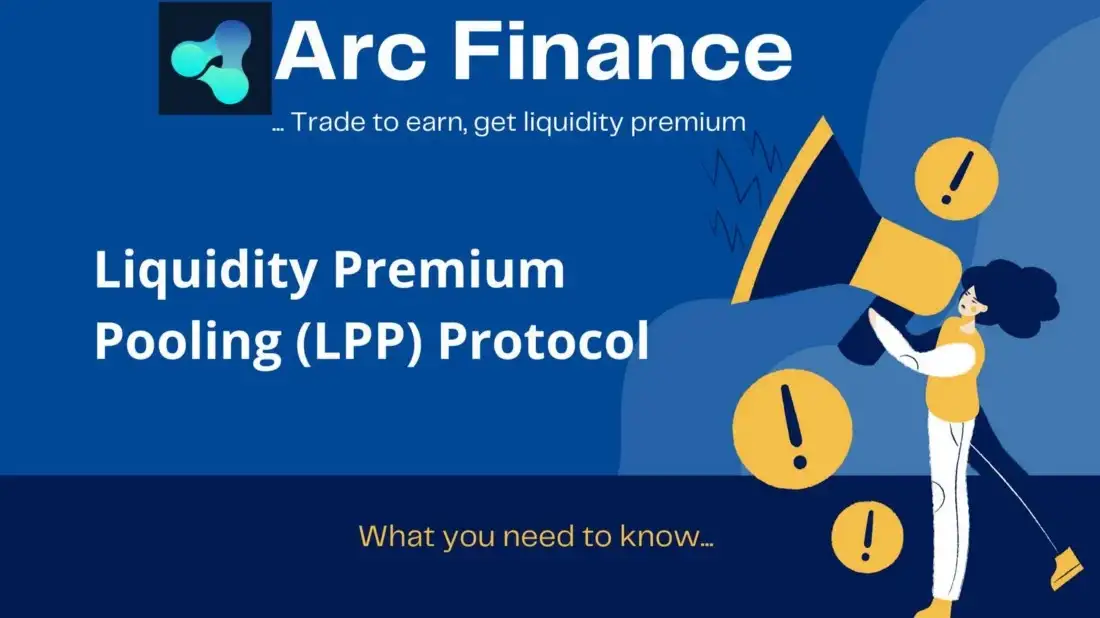Arc Finance’s Liquidity Premium Pooling Protocol: A viable tool for Liquidity Management

DeFi 1.0 employed AMM and liquidity mining strategies in the early days to recruit customers and gain liquidity in order to lay the groundwork for service delivery. LP providers were rewarded with project tokens during this procedure. Around the summer of 2021, the meteoric growth of DeFi was triggered by AMM and liquidity mining. The merger provided a framework for DeFi to deliver services such as DEX trading, loans, derivatives counterparties, and so on, in an industry where liquidity is critical.
However, such straightforward liquidity mining is complicated.
“The issue of opportunistic dumping not only harms investors, but it also jeopardizes the project’s future.”

Liquidity Premium Pool Protocol Liquidity Premium Mining Pool Service Protocol (LPP) is a key ecological area of Arc Finance. It enables consumers to make money quickly during the transaction procedure. The more transactions users participate in, the higher the premium income they will receive, and the more income will be deposited in the mining pool, forming a decent financial cycle and increasing the value of liquidity. Not a basic, particular mining pool, but a comprehensive economic and ecological idea.LPP has three sections:
- single token LP mining pool protocol;
- LP pair mining pool protocol; and
- Re-minting LP mining pool protocol, according to Arc Finance.
- Single Token LP Mining Pool Protocol
Users can earn a triple return by using project tokens and ARC LP tokens, which work as liquidity vouchers: the unlocking revenue from the token premium, the extra network token incentive, and the tax refund on transaction fees.“AUM is a mining algorithm, not a market-making process. It’s an algorithm that instantly modifies the speed at which mining output is unlocked so that customers can earn higher APYs for the same amount of money.” The unlocking speed is proportional to the quantity of lock LP tokens, as calculated by the following formula:
Unlocking speed = (k) * (the amount of locked LP).
Where; k = Amount of r-Tokens unlocked per block time (0.00000029
The unlocking speed is adjusted using the AUM algorithm. The pace with which your r-Token is unlocked is affected by both transaction rate and staking amount. Users are attracted to trade and stake because of the AUM incentive, which is reinforced by liquidity mining, maximizing the value of liquidity.

- Combined LP Mining Pool Protocol
In addition to transaction rebates and repurchase and burn, Arc Finance provides a number of tools to encourage participants to engage in liquidity premium mining and leverage the value of liquidity. To make the incentive long-term and viable, it also uses a pair of LP mining pool protocol and a cycling mining pool, where part of the platform’s charges are used to buyback Arc and reintroduce it into the pool.
- Users can choose between Arc Finance’s project tokens A and B.
- Through smart contracts, Arc Finance creates related A-B staking automatically.
- The newly produced A-B staking ratio is immediately assigned to users.
- When users stake the tokens, they might get a greater APY matching to the combined LP mining pool procedures.
Participants must first lock a particular amount of tokens and obtain r-Token lock-in vouchers in order to engage in Arc Finance’s liquidity mining.
Two profits are created by staking dual tokens (staking proof):
- Premium earnings.
- Staking earnings.
Unlocking speed = (k) * (Amount of locked ARC).
Where; k = r-token (0.00000029)
- Real-time Swap Mining Pool Protocol
Profits from unlocking are earned via LP swaps (swap volume proof), and regular swaps accrue trade volume proofs, allowing profit release to be accelerated. Conversely, users will take action to trade as a result of these many incentives, bringing much-needed liquidity to projects with asset pools on Arc Finance. Simultaneously, Arc Finance's LAAS will assist programs in managing their basic market value, allowing them to concentrate on ecological sustainability.
